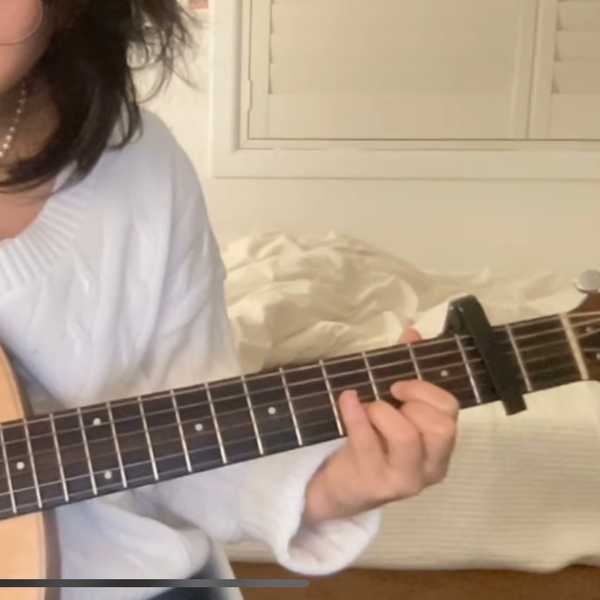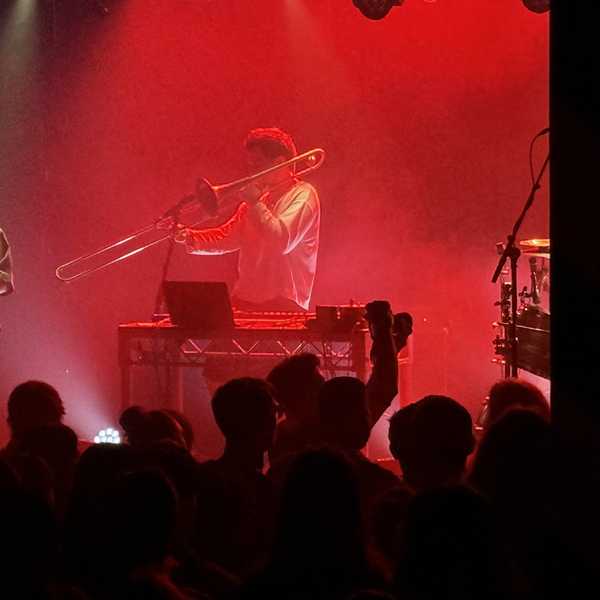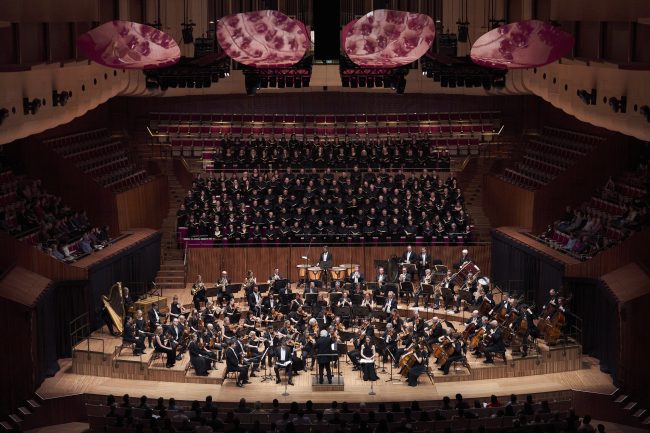
Friday 20 & Friday 27 September, 2024
Review by Paul Neeson (Arts Wednesday)
Eminent British conductor and Sydney Symphony Principal Guest conductor, Sir Donald Runnicles presented two concerts of late Romantic and Impressionist music at the Sydney Opera House.
Duruflé Requiem Fri 20 September
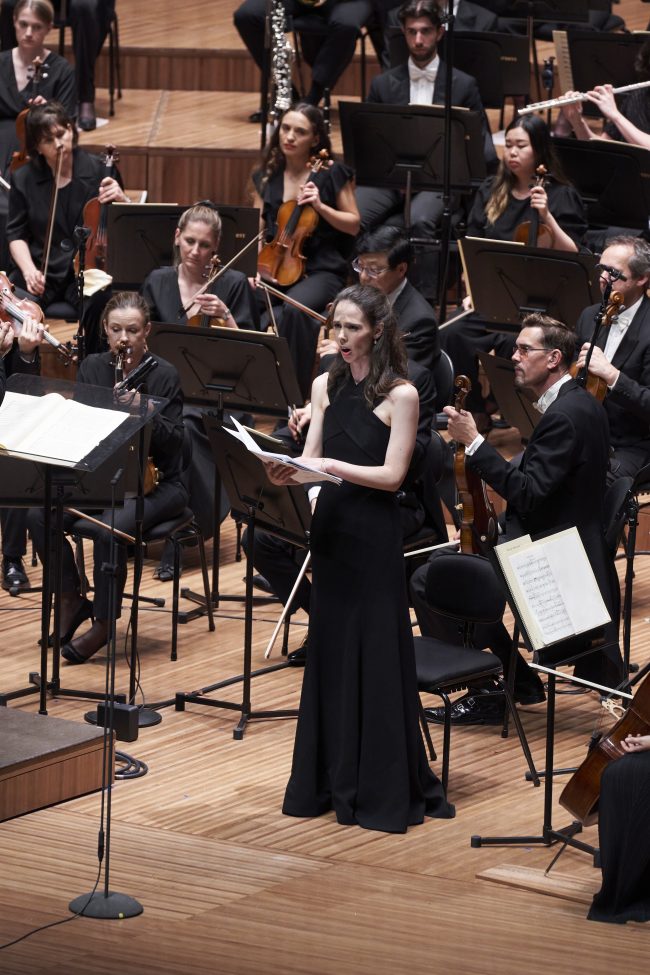
The orchestration genius of Claude Debussy was very much on display in the opener of the 1st concert, Nocturnes. Despite the fact that he objected to the word impressionism in relation to the art movement of the time, in his three Nocturnes he is literally painting with sound (as opposed to painting with light as Monet et al were.) His use of flutes and harp to evoke a pastoral scene, the upper strings to create swirling floating clouds, and the brass for dramatic interruptions of the moving images before our ears are just some examples of what we experienced. And Donald Runnicles took great delight in portraying these scenes with brilliant control of orchestral colour and dynamics.
The clouds in the Nuages movement floated in front of our gaze as we were uplifted and transported with the prevailing winds. Debussy would perceive no limits in his creativity to achieve his vision, so felt no compunction in using a female choir for the final movement, Sirènes, beautifully performed by the Sydney Philharmonia Choirs, because that is what the narrative demanded. The Sirens sang so bewitchingly that they lured the enchanted sailors onto the rocks and their doom, Odysseus being the most famous exception. Under Maestro Runnicles’ direction we were enchanted by their song, until they faded into the distance as they slipped below the horizon.
La Demoiselle élue is an early work of Debussy’s depicting a young woman in heaven yearning for her beloved who is still alive. It is composed as a ‘little oratorio’ as one of the conditions of winning the Prix de Rome, a prestigious prize for composers. Anna Dowsley as the narrator held the stage with her gentle but commanding mezzo-soprano voice. Camilla Tilling (soprano) as the Demoiselle had the clarity and emotion of the yearning lover in heaven, and they were gloriously encased by the Women’s Choir of the Sydney Philharmonia.
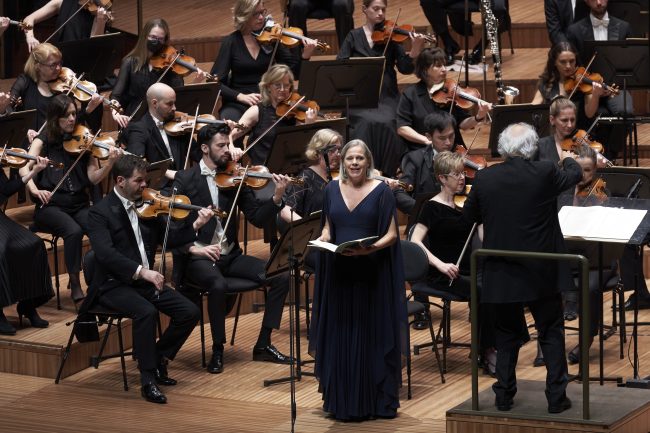
After interval the stage was completely filled with around a hundred musicians and the choir stalls were overflowing with the full choir of the Sydney Philharmonia for Duruflé’s Requiem. Add to this the mighty sound of the Opera House organ. We recently saw this sacred work performed by King’s College Choir with just an organ accompaniment, (read the review here) but this was on a completely different level altogether. Runnicles extracted maximum drama from the score, almost leaping from the podium in the louder tutti sections, caressing the choir in the softer parts and extended the fade outs far beyond the silence. Luckily there had been an announcement at the end in the interval asking the audience not to applaud between movements as the concert was being recorded. I’m sure the recording engineers breathed a sigh of relief when the enthusiastic crowd complied with this direction and waited until well after the final note had disappeared before reacting with gusto.
Mahler’s 4th Symphony Friday 27 September
The second concert began with a little known early work of Anton Webern, Im Sommerwind. Scored for large orchestra, it is a very descriptive work, almost in the style of Impressionism, but the chromatic tonal language is very late romantic. The Idyll (as Webern describes it) was indeed just that, a shimmering array of bucolic vignettes planted firmly in diatonic harmonies. Really you can’t go wrong fading in and fading out on a warm major triad. It does display the hallmarks of an early composition as the transitions between the ‘scenes’ were simplistic, basically reducing to a single quiet note with a sharp cut to a new section. As we heard later in the Mahler, an experienced composer can make those transitions seamless, almost invisible. This is the type of challenge composers spend sleepless nights trying to solve, and Webern was yet to acquire this skill.
Next we were introduced to Chinese soprano Ying Fang for six songs by Richard Strauss. This is where Runnicles’ specialty lies, in fin de siècle vocal music, particularly with large romantic orchestras, think Strauss, Mahler, Wagner and Debussy. Fang’s tone was clear, pure and vibrant, but what fascinated me were her unique dynamics. Often the note would begin almost in silence to grow slowly in to the dominant sound in the hall. Her ability to blend with the orchestra like just another instrument displayed not only her talent and sensitivity, but also her artistically contained ego. This was especially apparent in Wegenlied and Morgen. Other songs such as Zueignung and Allerseelen Fang lead us on a more jaunty traditional German song with clarity and jocularity.
And to the main course of this feast of lush romanticism, Mahler’s 4th Symphony. Again a large orchestra filled the stage and Runnicles was in control of his forces at all times; from coaxing them into the playful dance rhythms of the Swiss Länder melodies, to the lush transitions from glimmering rich string sections to the boisterous brass declarations. What also became apparent was his unique control of the dynamics. Similar to the wide range of Fang’s delivery, Runnicles would use the orchestra as a subtle glow in the background picking out particular highlights such as a single harp note, or a languid wind motif, leaving no doubt about where our attention was being directed. His minute control of every single sound being produced by this mass army of musicians was again on display with Concertmaster, Andrew Haveron’s use of two different violins on stage to produce specific timbres for different musical effects. His many violin solos throughout the symphony were exquisitely performed, tugging at our heartstrings especially in the slow 3rd movement.
When it came to the famous 4th movement, Sehr behaglich, with solo soprano, Ying Fang suddenly appeared from behind the harp where she was surreptitiously seated from the opening. Again her professional lack of ego was displayed, as she took her place behind the strings like just another musician. I’ve often thought it odd and uncomfortable for the soprano when they sit at the front of the orchestra like the proverbial ‘shag on a rock’ for 3 long movements waiting for their turn to shine. Was this her idea or the suggestion of Maestro Runnicles. Either way, very refreshing. This was Mahler at his best, with every expression and colour brilliantly crafted.
Donald Runnicles and the Sydney Symphony Orchestra are the perfect match and we look forward to their return season in 2025 with Shostakovich, more Strauss and Sibelius on the menu. How spoilt we are.
You can listen to a recent interview with mezzo-soprano Anna Dowsley here:
Share "Review: Sydney Symphony Orchestra & Donald Runnicles"
Copy







